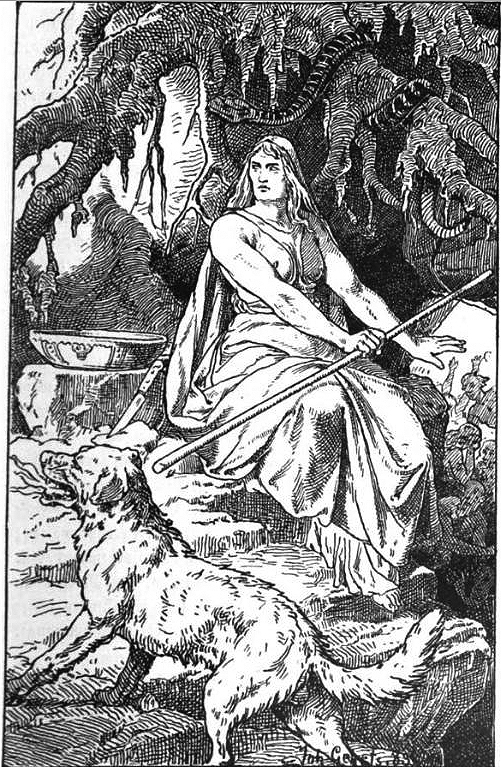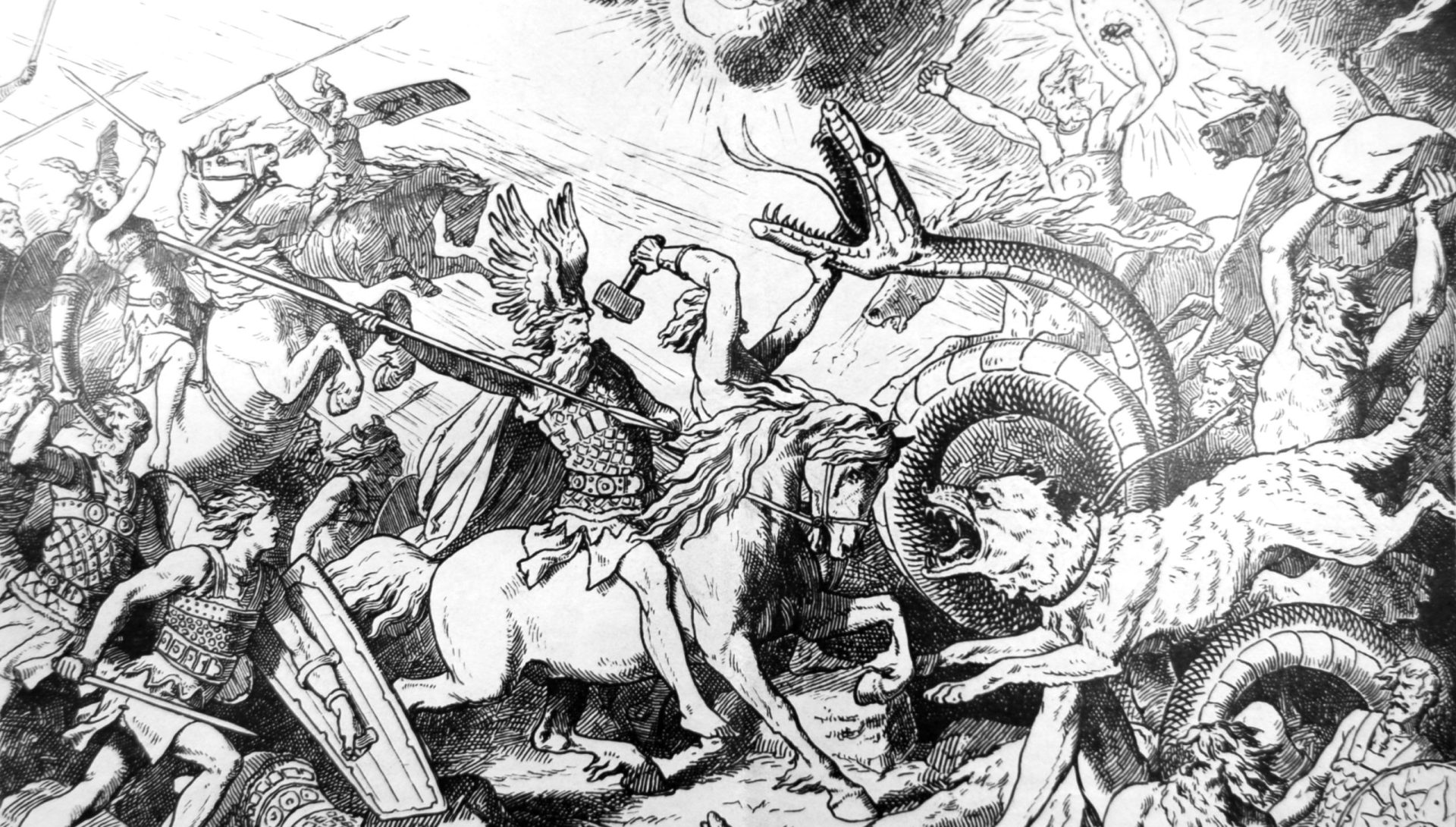Norse mythology paints Garm (Garmr in Old Norse) as the blood-stained guardian of Hel's gate. He is often portrayed as a wolf or dog associated with the Underworld (Hel or Helheim), the destruction of all things, and the war of the gods, Ragnarök.
Is Garm a God?
Sources that survive from the ancient Viking/Scandinavian period link Garm with Hel and the destruction of man. But, there are no sources available that tell us if he was considered a god or not.
Garm’s Description in Norse Literature
Although the information about Garm is sparse, it’s still possible to paint a picture of how this Norse being was perceived in the Viking Age. The description of Garm often consists of a blood-stained wolf standing as guardian to Hel’s gate.
Other scholars link Garm and the nameless Hellhound Hel, mentioned in the Eddic poem Baldrs Draumar (Balder’s dreams). But, the reference is only brief. It tells a tale of Odin’s journey to the Underworld (Helheim). Odin meets a dog along the way, which barks at him.
Scholars often assume the dog is Garm, even though the dog is unnamed.
In an Eddic poem called the Völuspá, Garm is described as howling wildly outside the Gnipa Cave. Linking Garm with the hound of Hel is problematic because it is not confirmed where the “Gnipa Cave” is.
But, because cave imagery depicts the Underworld in mythologies across the globe, it could be summarised that Garm is the guard to the Gnipa Cave and an entrance to the Underworld.

Garm Attestations in the Prose Edda and the Poetic Edda
Although Old Norse literature is sparse, two sources attest to Garm: the Prose Edda (written by Icelandic Snorri Sturluson) and Poetic Edda (an untitled collection).
The Grímnismál, as part of the Poetic Edda, refers to Garm as the most superior of all canines. It describes him as ‘to canines what Odin is to gods and what Yggdrasil is to trees.’
A second Eddic poem refers to Garm as part of a refrain that repeats throughout the poem.
Now Garm howls wildly before Gnipa Cave. Chains will snap, and the wolf will run.
Wovles in Norse Mythology – Bavipower
Garm is called a hundr “dog” in the Grímnismál, whereas the exact reference in the Völuspá refers to Garm using the word freki, meaning “wolf.”
Are Fenrir and Garm the Same?
In all sources, Garm and the wolf Fenrir are portrayed as canines linked with the Underworld and the forces of chaos. So some assume Fenrir and Garm are the same.
Fenrir translates from old Norse to ‘He Who Dwells in the Marshes’ and refers to the most notorious of all other wolves in Viking mythology. As the son of the trickster Loki and giantess (jötunn) Angrboda, he is also a brother of Jörmungandr and the underworld goddess Hel.
When the Æsir gods saw Ferir growing too quickly, they chained him in an abandoned swamp. A description that is reminiscent of Garm’s rapid transition into adulthood.
Sources suggest that when Ragnarök arrives, Fenrir breaks free from his chains and simultaneously runs across the world with his upper and lower jaws touching the sky and ground. His gaping hole of a mouth lets him devour everything and everyone in his path.
Another similar reference is found in a Norse poem that states that Garm will break free from his chains at Ragnarök and that Garm may be using another name.
In the Grímnismál, Garm is referenced as part of one of the events leading to the destruction of the world, Ragnarök. This event is the escape of Fenrir after being tied up by the gods and abandoned in a remote swamp to stop him from absorbing the cosmos.
The two images of bound wolves breaking loose simultaneously, often seen, make it hard not to assume whether Fenrir and Garm are the exact Norse figure.
Whether or not these figures are the same is irrelevant if you consider that there are always described as an omen or a thing of destruction.
Who Kills Garm?
The Norse myths recount that the final Ragnarök battle will culminate in a monstrous battle between the gods, demons, and giants. Tyr (god of war and justice) will fight Garm.
Sources suggest that the hound of Hel will break loose at Ragnarök, along with many other bound and imprisoned monsters, to conquer and pillage the world of humans.
It is said that the story ends here for Garm and Tyr, as they kill each other and both die in the final battle of Ragnarök.

